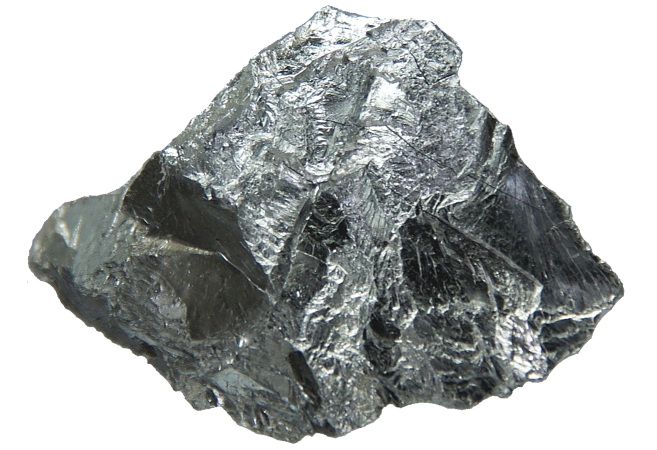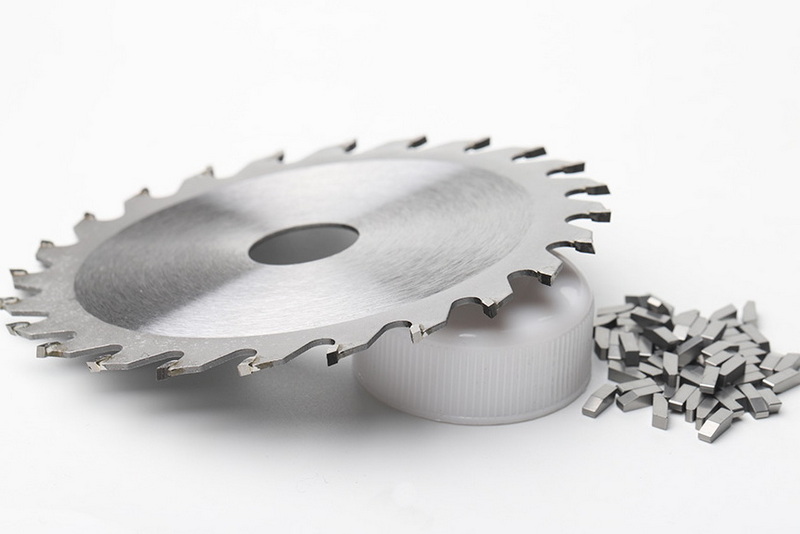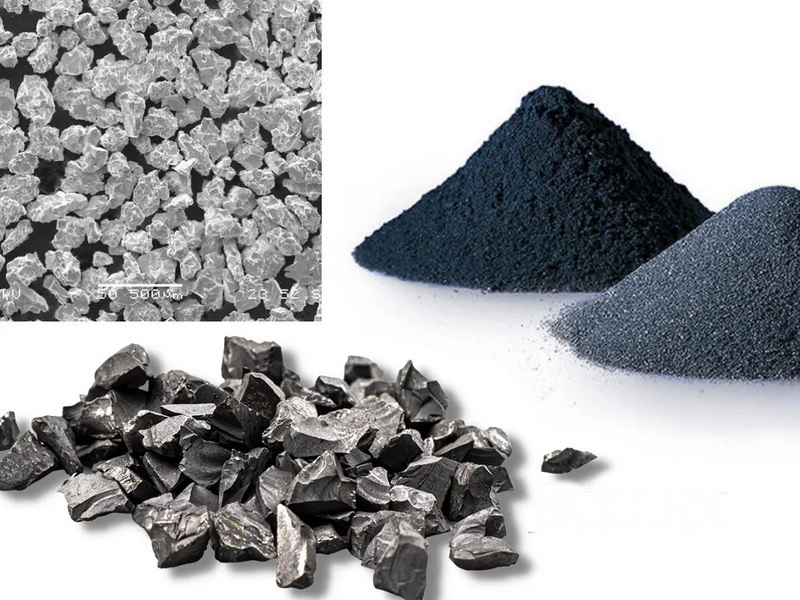Content Menu
● Introduction to Tungsten Carbide
>> Chemical Properties
>> Physical Properties
● Applications of Tungsten Carbide
● Is Tungsten Carbide Ferrous or Nonferrous?
● Manufacturing Process
● Environmental Impact and Recycling
● Conclusion
● FAQs
>> 1. What is Tungsten Carbide Used For?
>> 2. Is Tungsten Carbide Magnetic?
>> 3. How is Tungsten Carbide Manufactured?
>> 4. Can Tungsten Carbide Tools Be Sharpened?
>> 5. Is Tungsten Carbide Recyclable?
● Citations:
Tungsten carbide, a compound made from tungsten and carbon, is renowned for its exceptional hardness and durability. It is widely used in various industrial applications, including cutting tools, wear-resistant parts, and even jewelry. However, one common question about tungsten carbide is whether it is ferrous or nonferrous. In this article, we will delve into the properties of tungsten carbide, its applications, and clarify its classification as ferrous or nonferrous.

Introduction to Tungsten Carbide
Tungsten carbide (WC) is a chemical compound consisting of equal parts of tungsten and carbon atoms. It is known for its high melting point, hardness, and resistance to corrosion and wear. The compound is often mixed with other metals like cobalt to enhance its toughness and durability.
Chemical Properties
Tungsten carbide is highly resistant to acids but can react with hydrofluoric acid/nitric acid mixtures and fluorine gas at room temperature. It oxidizes at high temperatures, typically starting around 500–600 °C. The oxidation process accelerates significantly at higher temperatures, forming tungsten trioxide (WO₃) when heated in an oxygen-rich environment.
Physical Properties
WC has a hexagonal crystal structure and a high Young's modulus of approximately 550 GPa, which is nearly twice that of steel. Its Mohs hardness is around 9, making it one of the hardest substances known, second only to diamond. The material's high density and thermal conductivity also contribute to its excellent performance in high-temperature applications.
Applications of Tungsten Carbide
Tungsten carbide is used in a wide range of industries due to its unique properties:
1. Cutting Tools: It is extensively used in cutting tools, drill bits, and saw blades because it maintains sharpness longer than steel tools and can withstand high temperatures.
2. Jewelry: Tungsten carbide is popular in jewelry due to its durability and resistance to corrosion, making it ideal for wedding bands and fashion rings.
3. Industrial Machinery: It is used in components requiring high wear resistance, such as pump parts and valve seats.
4. Thermal Spray Coatings: Tungsten carbide is applied as a coating to enhance wear resistance in various industrial applications.
5. Aerospace and Defense: Due to its high density and strength, tungsten carbide is used in military applications, such as kinetic energy penetrators and rocket nozzles.
6. Medical Equipment: Its biocompatibility and wear resistance make it suitable for use in surgical instruments and implants.

Is Tungsten Carbide Ferrous or Nonferrous?
Pure tungsten carbide does not contain iron, making it a nonferrous material. However, in some applications, tungsten carbide may be mixed with other metals, including cobalt, which is magnetic but not ferrous. The presence of cobalt does not classify tungsten carbide as ferrous since it lacks iron.
Manufacturing Process
The manufacturing of tungsten carbide typically involves a powder metallurgy process:
1. Powder Production: Tungsten carbide powder is produced through the reaction of tungsten oxide with carbon at high temperatures.
2. Mixing with Binder: The WC powder is mixed with a binder metal, usually cobalt, to improve its toughness and sinterability.
3. Compaction: The mixture is then compacted into the desired shape using various methods such as pressing or injection molding.
4. Sintering: The compacted parts are sintered at high temperatures (around 1400–1600 °C) in a vacuum or hydrogen atmosphere to achieve full density and strength.
Environmental Impact and Recycling
Tungsten carbide is considered environmentally friendly due to its recyclability and long lifespan, which reduces waste and conserves resources. Worn-out tools and scrap material can be reclaimed and reused, reducing the need for primary tungsten extraction, which can have environmental impacts such as pollution and habitat destruction.
Conclusion
In conclusion, tungsten carbide is a nonferrous compound due to its composition of tungsten and carbon without iron. Its exceptional hardness, wear resistance, and thermal stability make it invaluable in various industrial and consumer applications. Despite its brittleness, tungsten carbide remains a preferred material for cutting tools, wear parts, and even jewelry due to its durability and aesthetic appeal.

FAQs
1. What is Tungsten Carbide Used For?
Tungsten carbide is primarily used in cutting tools, drill bits, and other wear-resistant components due to its hardness and durability. It is also used in jewelry and as a thermal spray coating for wear resistance.
2. Is Tungsten Carbide Magnetic?
Pure tungsten carbide is not magnetic. However, when mixed with metals like cobalt, which is magnetic, the composite may exhibit magnetic properties.
3. How is Tungsten Carbide Manufactured?
Tungsten carbide is typically manufactured through a powder metallurgy process, involving mixing tungsten carbide powder with a binder metal, compacting, and then sintering at high temperatures.
4. Can Tungsten Carbide Tools Be Sharpened?
Yes, tungsten carbide tools can be sharpened, but it requires specialized equipment and techniques due to their hardness.
5. Is Tungsten Carbide Recyclable?
Yes, tungsten carbide can be recycled. Worn-out tools and scrap material can be reclaimed and reused, reducing waste and conserving resources.
Citations:
[1] https://en.wikipedia.org/wiki/Tungsten_carbide
[2] https://www.allied-material.co.jp/en/techinfo/tungsten_carbide/features.html
[3] https://www.thermalspray.com/understanding-the-unique-characteristics-of-tungsten-carbide/
[4] https://www.polytechforum.com/metalworking/is-tungsten-carbide-ferrous-318627-.htm
[5] https://www.britannica.com/science/tungsten-carbide
[6] https://www.alamy.com/stock-photo/tungsten-carbide.html
[7] https://www.retopz.com/57-frequently-asked-questions-faqs-about-tungsten-carbide/
[8] https://www.thermalspray.com/questions-tungsten-carbide/
[9] https://shop.machinemfg.com/the-pros-and-cons-of-tungsten-carbide-a-comprehensive-guide/
[10] https://www.linkedin.com/pulse/characteristics-tungsten-carbide-zzbettercarbide
[11] https://www.azom.com/article.aspx?ArticleID=1203
[12] https://www.azom.com/properties.aspx?ArticleID=1203
[13] http://www.tungsten-carbide.com.cn/tungsten-carbide-grade.html
[14] https://www.zzbetter.com/new/Three-Applications-of-Tungsten-Carbide.html
[15] https://www.gettyimages.hk/%E5%9C%96%E7%89%87/tungsten-carbide
[16] https://www.freepik.com/free-photos-vectors/tungsten
[17] https://www.istockphoto.com/photos/tungsten-carbide
[18] https://www.istockphoto.com/photos/tungsten-carbide?page=2
[19] https://stock.adobe.com/search?k=tungsten+carbide
[20] https://www.tungstenringsco.com/faq
[21] https://theartisanrings.com/pages/tungsten-rings-faqs
[22] https://www.carbidetek.com/faqs/
[23] https://www.tungstenrepublic.com/Tungsten-Carbide-Rings-FAQ.html
[24] https://www.carbideprobes.com/wp-content/uploads/2019/07/TungstenCarbideDataSheet.pdf
[25] https://www.linde-amt.com/resource-library/articles/tungsten-carbide
[26] https://www.tungco.com/insights/blog/5-tungsten-carbide-applications/
[27] https://www.vedantu.com/chemistry/tungsten-carbide
[28] http://www.chinatungsten.com/Ferrous-Metal.html
[29] https://www.twi-global.com/technical-knowledge/faqs/what-metals-are-non-ferrous
[30] https://www.totalmateria.com/en-us/articles/tungsten-carbide-metals-1/
[31] https://www.reddit.com/r/askscience/comments/9whr5d/is_tungsten_carbide_an_alloy/
[32] https://www.hmtg.de/en/was-ist-hartmetall/
[33] https://create.vista.com/photos/tungsten-carbide/
[34] http://www.tungsten-carbide.com.cn
[35] http://www.chinatungsten.com/Tungsten-Carbide/Properties-of-Tungsten-Carbide.html
[36] http://machinetoolrecyclers.com/rita_hayworth.html
[37] https://www.tungco.com/insights/blog/frequently-asked-questions-used-tungsten-carbide-inserts/
[38] http://www.carbidetechnologies.com/faqs/
















